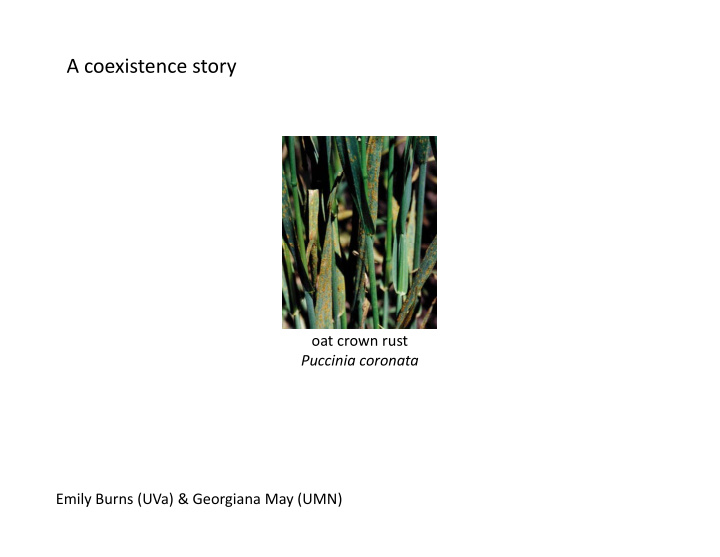



A coexistence story oat crown rust Puccinia coronata Emily Burns (UVa) & Georgiana May (UMN)
A coexistence story • Multiple rust strains (genotypes) • Each strain carries multiple (~10 ‐ 15) p ( ) virulence alleles • Different hosts (oat cultivers) bred with varying degrees of resistance with varying degrees of resistance • Cost of virulence: rust strains show negative correlation between number of virulence alleles and latent period f i l ll l d l i d (time between initial infection and oat crown rust Puccinia coronata later spore production) p p • Competition ‐ colonization trade ‐ off? Emily Burns (UVa) & Georgiana May (UMN)
Aphidius ervi , a parasitoid wasp
Micro ‐ vs. macro ‐ parasites: A useful (?) distinction for animal parasites Microparasites (e g viruses bacteria protozoa): Microparasites (e.g., viruses, bacteria, protozoa): • reproduce within host • often small • short generation time short generation time • hosts can develop immunity • one does not need to account for the severity of infection within host • and so, hosts can be classified by their infection status (susceptible, infectious, recovered) Macroparasites (e.g., parasitic helminths [worms], arthropods [fleas, ticks, lice, mites], copepods) • No (or slow) reproduction within host • often larger in size • longer generation time • longer generation time • short ‐ lived immunity of hosts • aggregated distribution of parasites among hosts. Average parasite burden is not necessarily representative not necessarily representative. originally from R. M. Anderson & R. M. May; summary courtesy A. L. Lloyd
Aggregated distribution of macroparasites among hosts Ascaris lumbricoides (roundworm) in humans = 2.18, 2 = 5.05 Ancylostoma duodenale (hookworm) in humans = 24.5
Host ‐ parasitoid models: A brief history • Nicholson ‐ Bailey model: A discrete ‐ time predator ‐ prey model. Thought to be useful for host ‐ parasitoid systems. • Problem: the Nicholson ‐ Bailey model predicts unstable oscillations and rapid extinction of one or both species. • 1980s, 90s: Long search for mechanisms that might stabilize host ‐ parasitoid dynamics p y • Result: Most commonly cited stabilizing mechanism is aggregation of risk: host individuals vary in their aggregation of risk: host individuals vary in their susceptibility to parasitism
Recommend
More recommend